Eerie Comet Landscape Revealed by Rosetta Spacecraft Photos
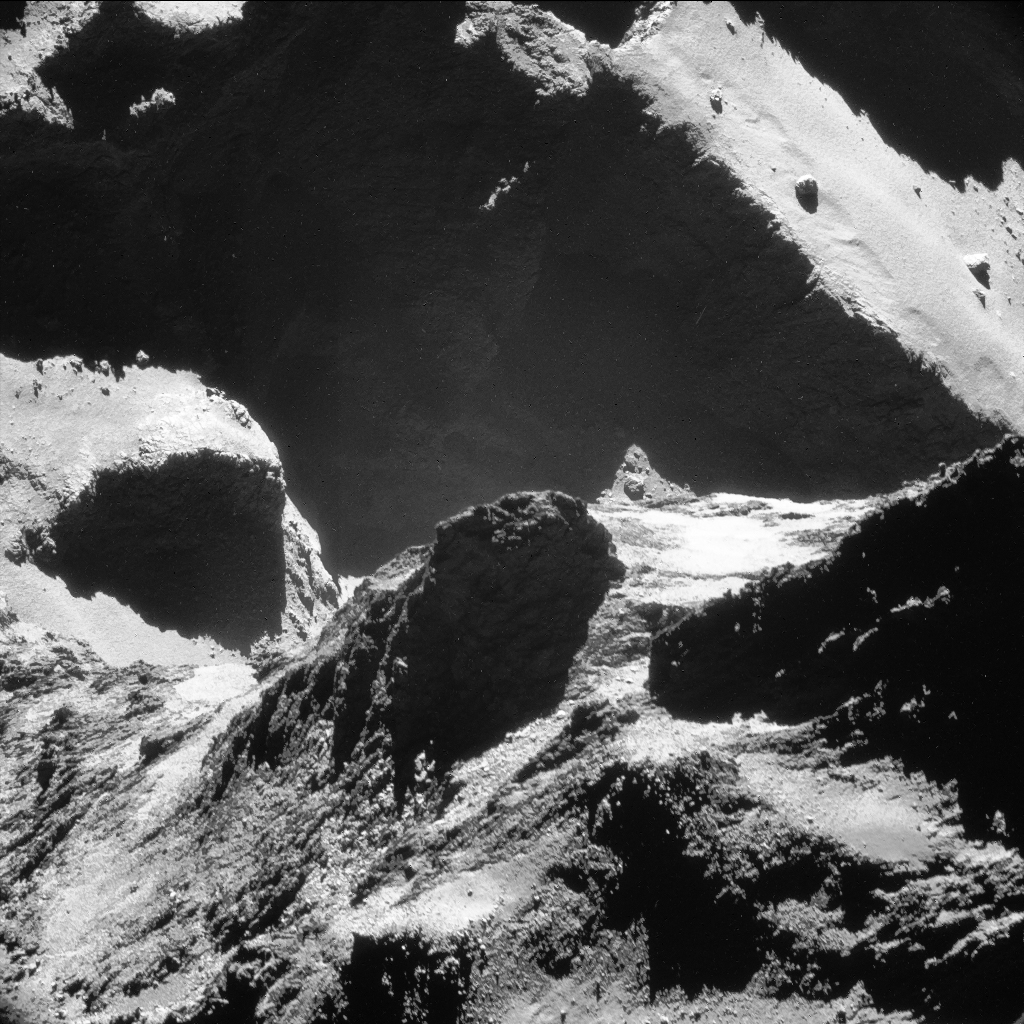
A deluge of newly released photos from the Rosetta mission reveals the haunting alien landscape on the surface of a comet as it orbits the sun.
Over the last few weeks, the European Space Agency (ESA) has released over 1,700 new images of the Comet 67P/Churyumov-Gerasimenko, taken by the Rosetta spacecraft during its closest approach to the 2.5-mile-wide (4 kilometers) space rock. The photos emanate an eerie stillness on the rocky, lifeless surface.
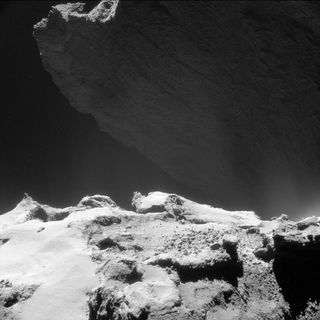
The two-lobe shape of 67P/Churyumov-Gerasimenko has drawn comparisons to a rubber duck (with a round head and larger body joined together by a narrow section). One of the new images was taken from the smaller lobe, with the larger lobe rising up like a cliff face in the distance.
The images reveal a highly varied topological landscape on the surface of the comet. In one image, the cliffs of Hathor are visible. These cliffs stretch 2952 feet (900 meters) high.
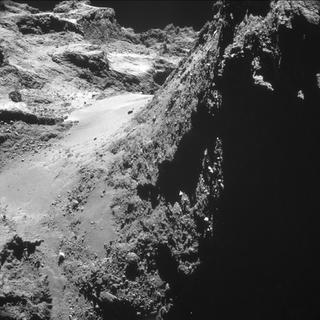
Rosetta traveled to Comet 67P/Churyumov-Gerasimenko along with the Philae lander, which touched down on the comet's surface on Nov. 12, 2014. Philae bounced off the surface and came to rest in a shadowed region where its solar panels do not receive enough light to recharge the lander.
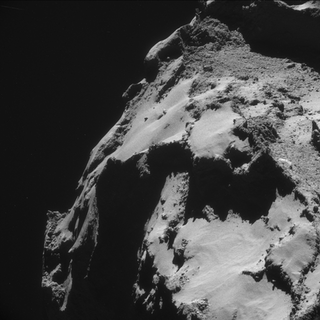
The swarm of newly released photos was taken around the time that Philae made its historic leap onto the comet's surface. This video shows Rosetta's orbital path around this time, including its release of Philae and its close approach to 67P/Churyumov-Gerasimenko.
There is more information about the photo release and about the entire mission at the Rosetta blog.
Get the Space.com Newsletter
Breaking space news, the latest updates on rocket launches, skywatching events and more!
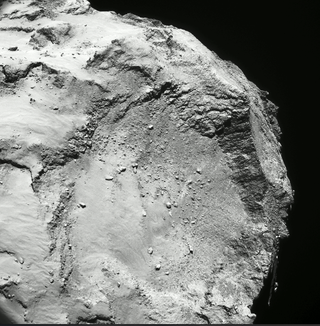
Follow Calla Cofield @callacofield.Follow us @Spacedotcom, Facebook and Google+. Original article on Space.com.
Join our Space Forums to keep talking space on the latest missions, night sky and more! And if you have a news tip, correction or comment, let us know at: community@space.com.

Calla Cofield joined Space.com's crew in October 2014. She enjoys writing about black holes, exploding stars, ripples in space-time, science in comic books, and all the mysteries of the cosmos. Prior to joining Space.com Calla worked as a freelance writer, with her work appearing in APS News, Symmetry magazine, Scientific American, Nature News, Physics World, and others. From 2010 to 2014 she was a producer for The Physics Central Podcast. Previously, Calla worked at the American Museum of Natural History in New York City (hands down the best office building ever) and SLAC National Accelerator Laboratory in California. Calla studied physics at the University of Massachusetts, Amherst and is originally from Sandy, Utah. In 2018, Calla left Space.com to join NASA's Jet Propulsion Laboratory media team where she oversees astronomy, physics, exoplanets and the Cold Atom Lab mission. She has been underground at three of the largest particle accelerators in the world and would really like to know what the heck dark matter is. Contact Calla via: E-Mail – Twitter